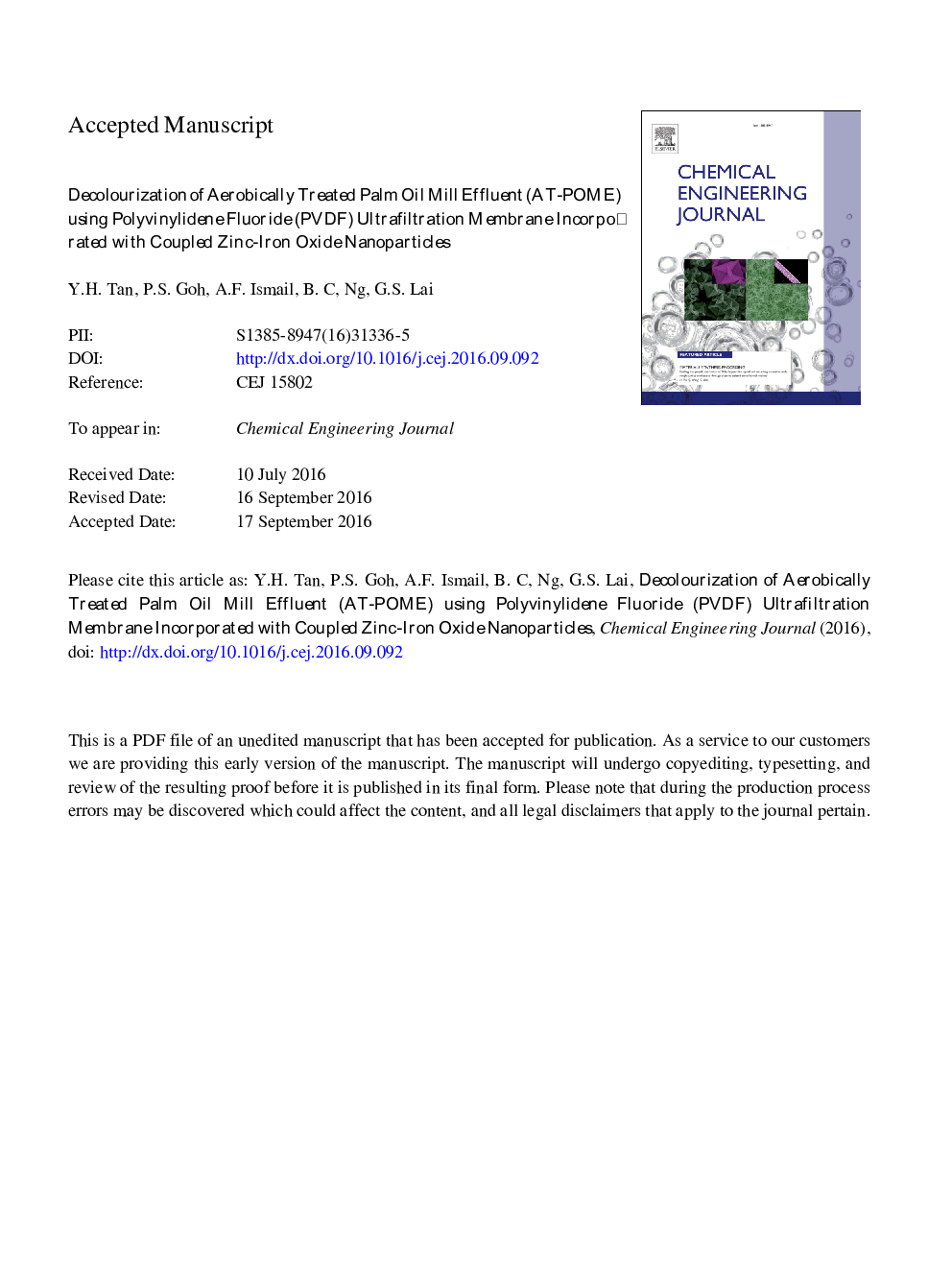| کد مقاله | کد نشریه | سال انتشار | مقاله انگلیسی | نسخه تمام متن |
|---|---|---|---|---|
| 4763699 | 1422970 | 2017 | 37 صفحه PDF | دانلود رایگان |
عنوان انگلیسی مقاله ISI
Decolourization of aerobically treated palm oil mill effluent (AT-POME) using polyvinylidene fluoride (PVDF) ultrafiltration membrane incorporated with coupled zinc-iron oxide nanoparticles
دانلود مقاله + سفارش ترجمه
دانلود مقاله ISI انگلیسی
رایگان برای ایرانیان
کلمات کلیدی
موضوعات مرتبط
مهندسی و علوم پایه
مهندسی شیمی
مهندسی شیمی (عمومی)
پیش نمایش صفحه اول مقاله

چکیده انگلیسی
Palm oil mill effluent (POME), which is rich in organic matter, is one of the major contributors of water pollution. To date, biological treatment has been employed before it is released into water bodies to minimize the environmental hazards. However, the dark brownish colour of the effluent is still a big challenge to be addressed. In regard to this concern, membrane separation can serve as an attractive solution for this issue. This paper aims to investigate the performance of ultrafiltration nanocomposite membrane embedded with coupled zinc-iron oxide (ZIO) for the decolourization of POME. The ZIO was synthesized through the solution combustion technique by employing zinc nitrate hexahydrate and iron (III) nitrate nonahydrate as the precursors and urea as the fuel. The nanocomposite flat sheet membrane was prepared via phase inversion process. The physico-chemical properties of the MMMs were analysed using zeta potential analysis, SEM, BET and contact angle. Continuous filtration test was carried out to evaluate the capability of the MMMs for colour and COD removal. The results showed that the increase in the ZIO loading has drastically increased the membrane surface negativity and led to the colour removal of 70%. In addition, with the addition of M0.5, the permeation and colour removal had increased 25% and 17% respectively, compared to the pristine PVDF membrane. However, the long term filtration test revealed that the structure of M0.5 collapsed after 4 cycles of washing, but M2.0 still retained its performance. In a nutshell, this study demonstrated that negative surface charge has improved the antifouling properties meanwhile hydrophilicity has contributed to increased water flux during the colour removal process.
ناشر
Database: Elsevier - ScienceDirect (ساینس دایرکت)
Journal: Chemical Engineering Journal - Volume 308, 15 January 2017, Pages 359-369
Journal: Chemical Engineering Journal - Volume 308, 15 January 2017, Pages 359-369
نویسندگان
Y.H. Tan, P.S. Goh, A.F. Ismail, B.C. Ng, G.S. Lai,